Primary School in Rural community embraces Programming
In this week’s installment of The Bright Side, we traveled to Succotz, where we discovered the first school to earn the Wow factor by truly embodying the spirit of doing more. The MORE campaign stands out as one of the Ministry of Education’s most comprehensive and thrilling initiatives to date. Embracing five fundamental pillars, the campaign challenges schools to demonstrate their commitment to being more digital, more healthy, more involved, more inclusive, and more creative and innovative. Sabreena Daly tells us more.
Sabreena Daly, Reporting
Jianny Humes is a standard six student who shared with me her love of animation. It was after sitting in her first computer science class in standard four that she realized her interest in animation transitioned to technology in its entirety.
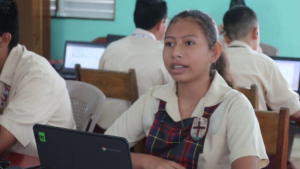
Jianny Humes
Jianny Humes, Student, Victorious Nazarene School
“I like watching animation videos about how people use characters to animate. And then, we started getting computer classes in standard four, and that’s when I started to develop most of my interest in this class. We’ve been learning how to program. One of the things we’re doing is we’re almost gonna finish the course. So we’re doing course F right now. And we’re using artificial intelligence to try to figure out what happens if we do something wrong or we program it wrong, wrongly.”
Jeremy Yacab has a similar interest. He shared his understanding of the concept of artificial intelligence and its functions.
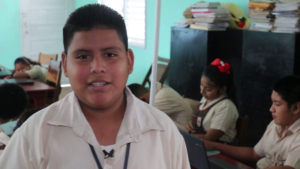
Jeremy Yacab
Jeremy Yacab, Student, Victorious Nazarene School
“I like Computer Science. It’s one of my favorite subjects, to say.AI means artificial intelligence and it is all about putting information to the computer and it will detect what information you’re putting and what you’re not.”
Both of these students are enrolled at Victorious Nazarene Primary School in San Jose Succotz, Cayo District.
Under the tutelage of Amilcar Vasquez, the students are delving into artificial intelligence where they gain insight not only into the fundamentals, but also the diverse methods through which users can effectively prompt AI to execute instructions.
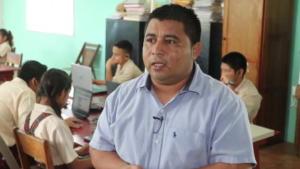
Amilcar Vasquez
Amilcar Vasquez, Computer Science Teacher, Victorious Nazarene School
“We were looking a little bit at machine learning and how data is used to train computers, and we were basically touching the fundamental concepts of being able to train the computer the right way. So what I did was I purposely asked them to train it the wrong way and see if their program, their AI gave the desired outcome, which they noticed it didn’t. So they went back and trained it properly. And a lot of big concepts come into mind, you have the power to do things the right way.”
An educator of fourteen years, Vasquez has been with the institution since the beginning of his career, teaching primarily information technology. He asserts the numerous advantages associated with exposing students to IT at the earliest possible stage.
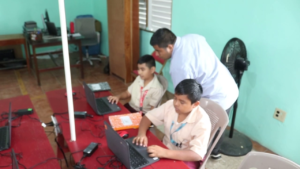 Amilcar Vasquez, Computer Science Teacher, Victorious Nazarene School
Amilcar Vasquez, Computer Science Teacher, Victorious Nazarene School
“The direct benefit is definitely how they can accomplish better things at the high school level. I always have my students come back and say, you know what, I went to high school and it was a breeze. But when they don’t get information technology at the primary level, they struggle from high school. And in university, I’ve heard university professors say, you know, there are students taking Programming 1, Programming 2 classes, five times over because they simply don’t have the fundamentals, the basics.”
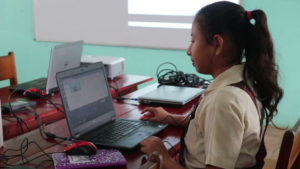 While the basics of Information Technology have been offered at this institution for over a decade, Belize’s education system has shifted to embracing technology through the inclusion of computer science and technology into its national curriculum. Shirley Humes is the principal at Victorious Nazarene and shared what this meant to the institution.
While the basics of Information Technology have been offered at this institution for over a decade, Belize’s education system has shifted to embracing technology through the inclusion of computer science and technology into its national curriculum. Shirley Humes is the principal at Victorious Nazarene and shared what this meant to the institution.
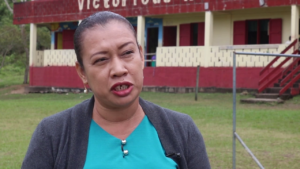
Shirley Humes
Shirley Humes, Principal, Victorious Nazarene School
“Before the computer science and technology curriculum was implemented into the curriculum, we had embraced IT, which is information technology; teaching our students just the basics of how computers work. So that was like an extracurricular for us. But when computer science and technology was implemented into the curriculum, we embraced it because we saw that our students could have taken advantage of what was being offered, something very new to our country, something very new to our school curriculum. We have a lot of our students who are rural, they come from rural areas. And they don’t have the opportunity to explore with a device or to be able to use a device at home. So this would be the only place where that can happen. And it has paid off because we have seen many of our past students going into high school and excelling and doing well because a lot of the things that they have to do for their work is digital. So it was something that we thought would benefit our students.”
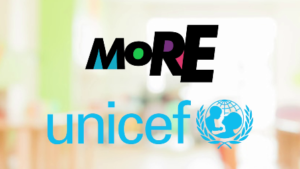 The Ministry of Education recently unveiled its ambitious MoRe Campaign, aimed at inspiring educators and institutions to elevate their commitment to student development and revolutionize education in Belize. MoRe is anchored by five pillars – fostering greater creativity and innovation, deepening involvement, promoting health, championing inclusivity, and embracing digital advancement – the ministry keenly acknowledges that Victorious Nazarene, a school in a rural community, has been embodying the spirit of “MoRe” long before the campaign’s inception.
The Ministry of Education recently unveiled its ambitious MoRe Campaign, aimed at inspiring educators and institutions to elevate their commitment to student development and revolutionize education in Belize. MoRe is anchored by five pillars – fostering greater creativity and innovation, deepening involvement, promoting health, championing inclusivity, and embracing digital advancement – the ministry keenly acknowledges that Victorious Nazarene, a school in a rural community, has been embodying the spirit of “MoRe” long before the campaign’s inception.
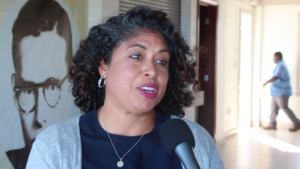
Dian Maheia
Dian Maheia, C.E.O., Ministry of Education
“The MORE campaign is easily one of the most comprehensive, exciting campaigns that the Ministry of Education has ever run. Actually, it’s what we call an umbrella campaign because It has five pillars and the five pillars really encompass just about everything right now that schools are doing and the purpose of the more campaign is quite simply to showcase what schools are doing so that we can encourage schools, students, teachers, communities to do more and to be more for Belize. Who would have thought that the first feature under the pillar of “Be More Digital” would come from a rural school and what we’ve seen at that school is just a fantastic effort from the teacher, from the principal, the way that they’ve embraced the code.org curriculum. It’s being taught from Standard 2 to Standard 6 at that school.”
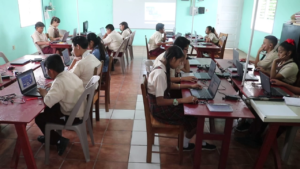 For students like Jeremy and Jianny, they’ve expressed that the knowledge they’ve gained will be of use as they further their education. But the reality is that in rural communities like Succotz, there are a considerable number of students who do not progress beyond primary education. In response to this challenge, Victorious Nazarene is committed to providing its students with a comprehensive education, ensuring that they are armed with every conceivable advantage for their future endeavors.
For students like Jeremy and Jianny, they’ve expressed that the knowledge they’ve gained will be of use as they further their education. But the reality is that in rural communities like Succotz, there are a considerable number of students who do not progress beyond primary education. In response to this challenge, Victorious Nazarene is committed to providing its students with a comprehensive education, ensuring that they are armed with every conceivable advantage for their future endeavors.
Jeremy Yacab, Student, Victorious Nazarene School
“Well, I could use it farther when I go to high school.”
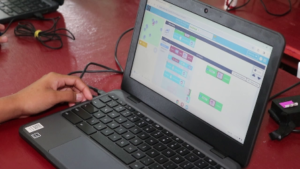 Sabreena Daly
Sabreena Daly
“Do you feel like you’ll be prepared for high school when it comes to what you’ve been learning so far?”
Jeremy Yacab
“Yeah, because I really want to go to high school.”
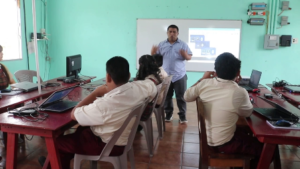 Amilcar Vasquez, Computer Science Teacher, Victorious Nazarene School
Amilcar Vasquez, Computer Science Teacher, Victorious Nazarene School
“I always say this: What if, and it happens, what if one of my students doesn’t go to high school anymore? Are they prepared to face the real world with just what I taught? And that brings a lot of questions to us because it might be unheard of, maybe in the urban areas, but it does happen. You know, for example, in Succotz and villages, some of them graduate and go right on to life. So we want to prepare them for both.”
Looking on the Bright Side, I’m Sabreena Daly.







Facebook Comments